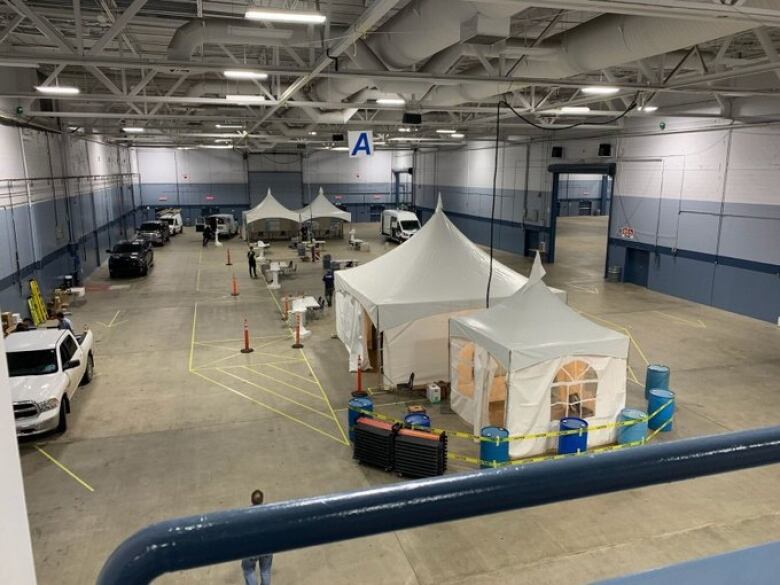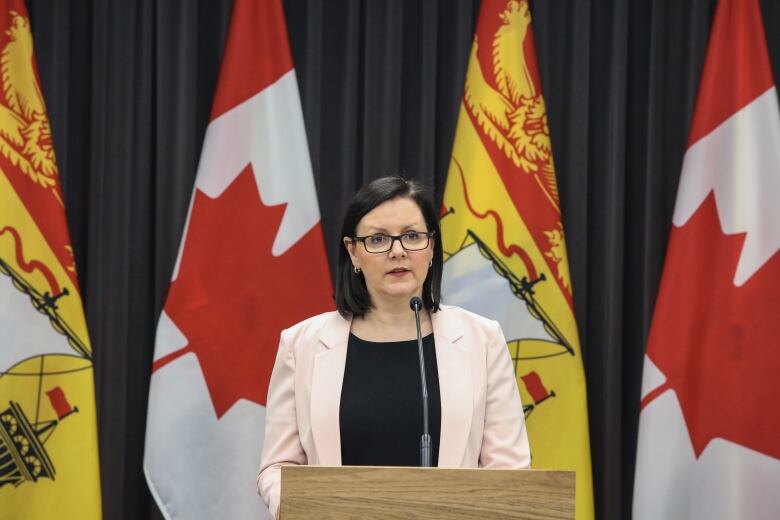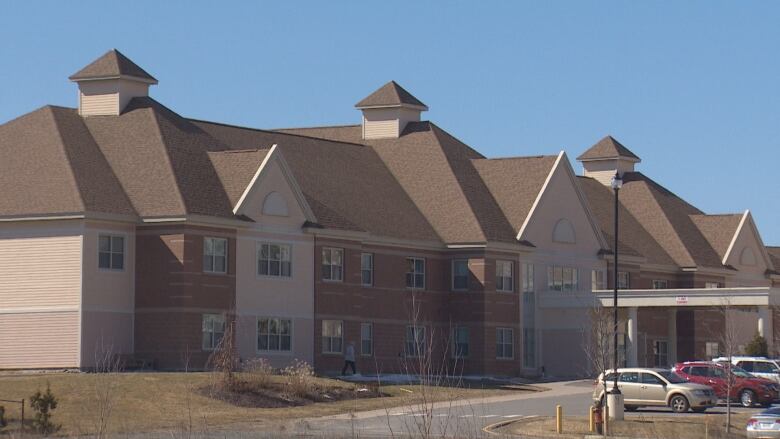Inside the detective work public health nurses do to limit the spread of COVID-19
Contact tracing isnt a new concept, but youve probably heard a lot about it lately

For the last few weeks, public health nurses across New Brunswick have been working the phones almost around the clock.
They are doing important detective work, interviewing each person in the province who has tested positive for COVID-19, and trying to figure out who they've been in contact with.
It's called contact tracing.
It's not a new concept. People who work in public health have been doing this for years to try to limit outbreaks of diseases ranging from measles to varicella.
But in the midst of the COVID-19 crisis, it's a term that's become part of our everyday vocabulary, along with things like physical distancing and flattening the curve.
And according to public health nurse Ruth Amos, who is the communicable disease program co-ordinator for health region 3 (Fredericton), it's crucial to limiting the outbreak.
"I believe contact tracing is a very cornerstone part of prevention of transmission of disease in any outbreak situation," Amos said in an interview at her Fredericton office.
In the midst of the COVID-19 outbreak New Brunswick reported 117 positive cases as of Thursday afternoon it's all hands on deck at Public Health, from nurses to dietitians to food inspectors.
"I think we have pooled the resources in public health like we have not done probably since H1N1, which was a vaccine response that we mostly gathered resources for and put resources towards," Amos said.
"In these times ... this has become the work that we have focused on."
The interview
When you think of contact tracing, you might think of detectives in a room, drawing lines between people's names on a giant whiteboard and poring over surveillance camera footage.
That's not exactly how it works. But contact tracing is part of a public health investigation, and like any good investigator, public health nurses need to have sharp interviewskills.
The investigation starts as soon as a lab confirms a positive case of COVID-19, according to Amos.

When interviewing the person who's tested positive, they're asked to think back to 48 hours before the onset of symptoms. Where did they go and atwhat time? How much time did they spend there? Who were they with? Who do they live with?
"All of those efforts would be to, again, prevent transmission and to share health messaging with contacts that would have been perhaps put at risk," Amos said.
Public health nurses gather information and the findings of their investigation are presented to a chief medical officer of health, Amos explained. They would decide who to share information with and how much they should be told.
Sometimes, that decision on what to share goes even higher up, to the chief medical officer of health, Dr. Jennifer Russell.
'Close contacts'
Then, public health nurses are responsible for reaching out to a person's "contacts."
These include close contacts, which Public Health defines as someone who was "within six feet of somebody for 15 to 30 minutes," Russell said on Thursday.
"That kind of close contact is usually happening in their homes or other people's homes," she said.

They may also notify a medium contact, somebody who had "limited contact" with the person who tested positive for COVID-19, according to Amos.
People exposed in a group setting may get a letter, while other people might find out when Public Health makes the information public thatsomeone who works in a store, for example, tested positive.
"If there's a public exposure, that would be communicated through myself or through a press release so the public would be aware," Russell said.
"Just like when we had some people who were exposed [to COVID-19] on flights and also during the measles outbreak,when there were people exposed in different settings."
Depending on the situation, public health nurses who are calling contacts may not be able to divulge much information about where the person may have been exposed.
That includes revealing who provided their name and phone number to public health as a contact.
"That is personal health information of the case we have asked the information of, and we cannot share that," Amos said.
Dispensing advice
But the aim of the call is not just to tell someone they may have been exposed.
Public health nurses also offer advice on how to self-isolate and how to watch for symptoms. Sometimes that means delving into the person's situation to determine whether they have a sufficient place to stay for 14 days, where there won't be anyone vulnerable at risk.
"Is that somewhere where your needs are met, you have access to food, to water and to what you would need to survive in that setting for 14 days?" Amos said.
She estimated the calls take about 20 minutes each. They're followed by daily check-ins, until the person completes the 14-day period.

These contact tracing calls could be happening at any time of day. Public Health has added an evening shift that works until 9 p.m., so they can get information to people when they need it. That's because labs often report positive casesin the evening, Amos said.
"We do not want to miss out on an opportunity to contact a case, advise them of a result and initiate that contact tracing and that inquiry and investigation in the same day."
Being in a small place does have its advantages. Contact tracing relies on a person being able to remember not just where they went and who they interacted with, but to know those people's names and, ideally, their phone numbers.
That's a bit easier in a place like New Brunswick, where it's rare for people to find themselves surrounded by people they don't know.
People often know the names of all their co-workers and may even count many of them as friends, Amos said.
"I do believe because we have fewer highrises in New Brunswick and, yes, we have less public transit, that probably contact tracing and even new cases has been somewhat limited in our favour," she said.
Shannex's contact tracing strategy
Contact tracing isn't a new idea in nursing homes, either.
It's a familiar process to people who work at Shannex, which has separate contact tracing teams for both employees and residents.

But the company, which operates retirement homes and long-term care homes in three provinces, has enhanced its contact tracing to deal specifically with COVID-19, according to Lisa Snodgrass, an infection prevention and control specialist with Shannex.
That's along with added restrictions on visitors that makeit easier to trace who is interacting with whom.
"Whether it's the way you modify assignments as to who's caring for who, tracking who is in and out of rooms and how much time they're spending in there, all of that type of information is now stuff that we're really documenting and keeping a closer eye on," Snodgrass said.
"The less time you have to spend asking questions on the phone, that's more time you have ensuring people are protected the way they should be."













_(720p).jpg)


 OFFICIAL HD MUSIC VIDEO.jpg)
.jpg)



























































































